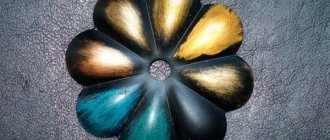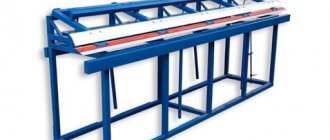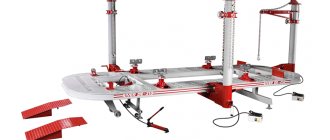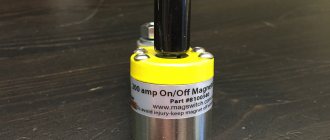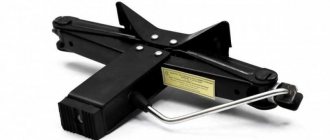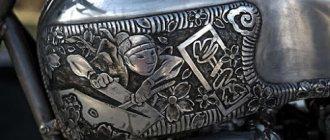Patina
Patination is the decoration of a metal surface with a protective film to create a more aesthetic and original appearance and protect the metal from corrosion.
Using chemical treatment, you can patina various metals - cast iron, steel, bronze, brass, and copper. The cost of application is from 300 rubles. m2
Patination is a method of processing a metal product that creates an aging effect. It is used to work with cast iron, steel, brass, bronze, copper and other metals. Patination has two purposes:
- creating an antique effect;
- formation of a protective coating.
General concept of patination
This term refers to the technique of aging a metal surface, which is achieved by applying paints based on various acids. As a result, the products acquire a unique appearance and are imbued with the spirit of antiquity.
Before carrying out work, it is recommended to tidy up the working surfaces and then treat them with a special primer. This increases the degree of adhesion of the dye and the surface. Patination of metal requires a lot of time and patience.
What is forging patination
Patination is the process of artificially aging a forged element; this effect can be achieved in several ways.
At the dawn of the development of artistic forging as an art, patination was carried out mainly by exposing the metal to various chemical and mechanical methods. These methods, in addition to their undeniable advantages (the acquisition of metal as a result of processing a stylized antique design), also had a number of significant disadvantages:
- the reagents used by craftsmen when using chemical patination methods sooner or later corroded the metal, which led to a sharp deterioration in its properties;
- As a result of mechanical influences, the metal lost its shape, as a result of which both the appearance of the product and its positive properties deteriorated.
Modern specialists in artistic forging mostly prefer other methods. We will talk about the technology of the most popular of them – applying special paint to metal – in this article.
Available effects on metals
Metal objects are not so often found in apartments. However, with the help of such elements it is possible to create a unique design. Their functions can be performed by candlesticks, lamps, chandeliers. Such products have an attractive appearance. However, in some interiors they want to give a special antique effect. For this purpose, the patination technique is used. With its help, you can achieve different results:
- The antique effect on silver objects looks very beautiful. This type of metal is highly susceptible to sulfur. Its use allows you to get different colors - from pale yellow to bright turquoise. Under the influence of chlorides and amino acids, it is possible to achieve a black tint. However, in this case the film will turn out to be quite rough. If you simply blacken the silver, you will be able to achieve an excellent antique effect.
- Gold does not react with virtually any chemical substances. If the alloy contains honey or nickel, after some time orange or brown spots will appear on the surface.
- Copper products are often found in residential premises. The formation of a green film on a copper base is observed under the influence of chlorides. It is possible to obtain black color due to interaction with the oxide. Copper reacts very quickly.
- Bronze products are easily subject to molecular destruction. In this case, a blue or green coating may form on the surface. The most noble result can be achieved with a black patina. This effect is created by processing the oil. Copper shavings are used for calcination.
See also
Features and types of paints for road markings, brand ratings and application
What is patina? Patina on metal. Patina on coins
What is patina?
The oxidation of iron is called rust. Oxidation of other metals - patina. They are fighting with the first one. They are chasing the second one.
They are persecuted not to drive them out, but on the contrary, to keep them. Coin collectors, for example, say that “ the patina on coins is the life experience of banknotes.”
The plaque testifies to the antiquity of the exhibit and the careful treatment of it by the previous owners.
However, in addition to the natural patina formed during the interaction of metal with the atmosphere and environment, there is also an artificial one.
When purchasing coins and other antiques, you should check the “authenticity” of the plaque.
Applying patina
Patina is applied artificially not only to deceive inexperienced treasure hunters and collectors.
The main purpose of man-made film is decorative. People are happy to buy door handles, forged objects, vases and statues made in antique style.
There is no need to look for true ancient monuments and pay fabulous sums for them. You can simply buy an item with an unnatural patina.
It is created using various acids and oxidizing agents. They are included in special mixtures.
Thus, it produces a whole range of liquids and ointments for aging the creations of aircraft modeling circles and clubs.
By purchasing a standard set of parts for an airplane model in a store, for example, you can turn the construction set into a unique copy.
The company mentioned above offers compositions that form a patina on white, red, gray metals.
By the way, the so-called blackened silver is also “the work of patina.” It comes in different colors.
Patina on metal
On some metals the film is green, on others red, on others black. The tone of the plaque also depends on the conditions in which the item was stored and used.
Bronze statues standing on city streets have a greenish patina. But, there are metal figures with a touch of other colors.
These are already artificially obtained specimens. Let us explain how the same metal can be dressed in different “clothes” using the example of silver.
Black on white metal appears after it is lowered into the sulfur liver. It is a mixture of sodium hydroxide and sulfur.
To obtain an artificial patina, its thick mass is diluted in water. The solution is heated to 70 degrees Celsius.
Sometimes, the product is not completely included in the composition. This is done if you only need to blacken certain areas of the decoration or decorative item.
Oddly enough, there is also old silver with an unnatural patina. The art of recreating patina was mastered in ancient Egypt.
Pliny the Elder testified to this. A writer who arrived in Egypt from Rome recorded: “Here silver is not minted, but painted.
Copper dust and sulfur are mixed with it. Silver with additives is melted in a tightly closed clay vessel.”
They learned to paint silver greenish-gray only in the 20th century. Then potassium iodide, water and hydrochloric acid were mixed.
White metal was dipped into the solution and it was covered with a noble film. It is nothing more than silver iodide.
When exposed to light, the plaque is partially destroyed. In some places, a clean base is visible from under the green “haze.”
You won't see a golden or brown patina on silver. Either this is not possible, or the necessary reagent has not yet been invented.
Only copper, bronze, and brass can be coated with a brownish coating. The dark shade of “wenga” is produced by a solution of the same sulfur liver.
Gold paint is achieved using copper sulfate. The reaction requires a mixture of the substance with water and potassium permanganate.
The metal is kept in the mixture for 4.5 minutes. The experiment will not succeed if the surface of the product is not pre-treated. It should be low-fat and dry.
Man-made patina is impressive, but does not always protect the item. There is no cuprite at the border of the film and the metal base.
This is a layer that prevents further spread of corrosion. It is he who slows down the process of destruction of ancient gizmos.
For example, it would take approximately one hundred thousand years for a coin to turn into sand. Without cuprite, the metal would turn to dust much faster.
The features of the middle layer between products and the film covering them were discovered in the USSR.
The repatination method was widely used in the Union State. The historical plaque was removed and replaced with an artificial one.
The latter was more aesthetic. But, after processing, some values began to quickly collapse.
Scientists grabbed their heads, and they came up with the causes of the disaster. While studying the composition of natural patina, physicists and chemists discovered cuprite and its metal-saving properties.
A protective layer cannot be formed by rapid exposure to a chemical solution.
It is created bit by bit, as a result of the age-old interaction of an object with the same bits of reagents in the air.
For example, albums, canvas bags, and paper envelopes for storing collectible coins block access to oxygen.
But, in a closed space, an increased amount of hydrogen sulfide is released.
It gradually warps, alters, and colors the metal, in particular silver. The film formed on coins is the sulfide of this metal.
Copper patina forms over a long period of time, under the influence of the environment.
Another precious element, gold, is not subject to patina. The yellow metal is not chemically active.
It is not possible to destroy it even in the surface layer. The exception is the case of gold alloys.
If copper, zinc, or silver are added to them, the plaque will appear. Most often, this is a rich orange film.
It appears in the form of dots or veins where the reagent has interacted with gold additives.
Types of patination compositions
Depending on the idea, patination allows you to achieve different effects:
- complete aging;
- partial aging;
- craquelure.
Patination substances may differ in consistency:
- Thick - similar to the paste that is used for processing wood. With its help, it is possible to obtain yellow or red tones reminiscent of gold.
- Liquid - made on the basis of water or polymers. Such products give the surface shine and make it more noble in appearance.
- Facet varnishes - help to obtain an aged surface due to the formation of cracks on it.
Acrylic
This material is considered universal. It can be used not only for metal, but also for wood or plaster. This substance is water-based. With its help, it is possible to create a durable coating, which is characterized by a high degree of adhesion to the surface. After applying the composition, a film appears on the product that protects it from germs and fungi.
Acrylic patination is considered a simple process. Even a beginner can handle this technology.
To get an original product, it is recommended to combine compositions of different colors. It is also permissible to apply various shades of patina in several layers. This will help achieve the creation of a complex ornament.
Moreover, there are a lot of acrylic colors on sale. In this case, you can purchase metallic or classic tones. If necessary, such patination can be combined with other techniques - ordinary painting, decoupage or varnishing.
stain
The use of such compositions is considered a simple way to artificially age a surface. The material helps to refine the products, making them more sophisticated and attractive. For stain application to be successful, it is important to properly prepare the surface.
Expert opinion
Zakharova Irina Yurievna
Cleaning professional with 15 years of experience. Our best expert.
Ask a Question
After completing the patination process, the product must be coated with wax or shellac primer.
Bitumen
This building material helps give the surface a special appearance, emphasizing all the relief elements. After applying the substance to the product, excess must be removed.
Bituminous patina is made on the basis of turpentine, concrete polymer and white spirit. It cannot be considered a finishing material. After drying, the surface should be coated with shellac to secure the result. Otherwise it won't last long.
Wax
Quite often, wax patinas are used as a finishing coating. They are presented in the form of a water-based paste. To prepare this composition, natural wax and metal dust are used. Colorless formulations are also available for sale. After applying them, a beautiful pearlescent shine remains.
See also
Top 4 types of paints for plastic and how to apply correctly, possible problems
With the help of wax patina, it is possible to emphasize the structure of the surface and tint it. It is important to consider that the material is easy to apply. It dries slowly and rubs easily. Therefore, you can use the substance at a comfortable pace. There are different shades of wax on sale - golden, bronze, silver, brass.
Oil
Oil patina is considered a very convenient option. It does not hide the natural shade of the material and helps to highlight the pattern. The characteristics of the substance resemble a waxy patina. It is easy to apply and dries slowly. It is important to take into account that the composition is prohibited from using the decoupage technique, since it causes the paper to dissolve.
Shellac
This material itself is yellow or red-brown in color. As the number of layers increases, it becomes darker. The substance can be used alone or combined with decoupage. Shellac can be used as an intermediate or finishing coat. To work with it you need to use a brush or sponge.
Color solutions
The most common type of patina is copper oxide. The surface painted with this paint has a greenish appearance. On other metals, oxidation processes occur differently, so patina gives different colors, for example:
- on steel - ocher or yellow;
- on bronze and brass - brown;
- on silver - darkish gray.
In construction supermarkets you can buy patina in a variety of colors:
- like silver;
- under natural copper;
- under gold;
- green copper oxide.
These are the most common colors, however, paints with more exotic shades are also available. Such paints do not imitate any metal, but are an independent color scheme. Their use is usually associated only with the desire to give the surface an antique look.
As an example, the following colors can be given:
- blue;
- violet;
- pink;
- red.
DIY instructions
The patination process is considered quite simple. Even a novice master can handle it.
Surface preparation
Before decorative application of patina, it is necessary to carefully prepare the surface. It is permissible to use such material only for perfectly smooth metal. There should be no signs of corrosion on it. This will lead to insufficient surface priming. As a result, the top layers will become covered with bubbles and peel off.
It is recommended to remove all burrs, cover chips and gouges with putty and sand with sandpaper. First you need to use a coarse and then a finer texture.
It is recommended to cover the prepared surface with a special primer. It is most convenient to use a spray can. After that, patina paint should be applied to the surface.
It is important to consider that the patina effect looks ideal on products that are painted with dark paint. The surface must dry well. Otherwise, the patina will not adhere well and you will not be able to achieve the desired effect.
Paint application technique
To carry out the patination procedure, it is permissible to use a brush or sponge. If you put the dissolved paint on the tip of the brush, you will be able to get completely different textures. Do not wet the brush before painting - it must be dry. A wet tool will cause streaks and drops to appear on the metal surface.
Experienced craftsmen do not advise using too large or small tools. The ideal bristle size is 2-3 centimeters. The sponge will give a dusting effect, but do not press it too hard. In this case, the pores of the tool will be imprinted on the surface.
See also
Rating of paints for decorative plaster and how to apply it yourself
It is recommended to keep a cloth and solvent on hand while working. You will also need some base paint. You need to work with patina very carefully. When reapplying the substance to metal there is a risk of getting an unattractive flat effect. When painting individual parts, it is important to be careful. If a substance is accidentally applied to an adjacent area, it should be painted over with a background substance.
How to patina metal using chemical processes
Use acid, solvents, heat. Study the characteristics of the metal and the possible consequences of reactions to choose the optimal color. Be sure to wear gloves and a protective mask, preferably outdoors.
There are many ways to patina metal using chemical reactions. For example:
- To give brass a brown tint, it is kept in a photofix solution with the addition of nitric, sulfuric or hydrochloric acid
- To obtain antique black on copper, it is immersed in a solution of 2-3 grams of liver sulfur and 2-3 grams of table salt
- To “blue” steel—to achieve an amazing glowing effect—it is immersed in a chromium solution at the rate of 100 grams of the substance per liter of water.
- To obtain a bright black color, steel is heated and then sharply cooled in cold oil.
- To obtain a gray gray tint on brass, it is immersed in a mixture of liver sulfur
- To obtain a blood-red tint on most types of metals, they are treated with copper sulfate along with zinc chloride
After any type of patination of metal by chemical reactions, allow the product to dry completely and coat it with varnish. If this is not done, the patina may become unusable - the coating obtained by such methods is quite short-lived and unstable to external negative influences.
Attention ! When working with acids, solvents and other chemically active substances, be sure to follow safety precautions. We also recommend trying patination on a small, inconspicuous area of metal to see the effect it will give, and then proceed to aging the entire surface.
If you want to get a beautiful forged product with an antique effect, you don’t have to patina the metal yourself. You can order it from us - the Tekhinkov artistic forging plant will fulfill orders of any complexity. Call or write to us for details.
Patination of metal using oxidizing agents
To obtain the required coating, it is worth immersing the metal in different chemical compositions. This method is considered very labor-intensive. However, as a result, you will be able to get a beautiful color film effect on the surface. This method helps to achieve a more lasting effect, since the film will not rub off from the surface like dyes.
To artificially age metal, you need to use special chemicals. Before starting work, preparation is required. However, it is not worth priming and painting metal. It is recommended to degrease and bleach using an acid solution. All manipulations can be carried out at home.
To achieve the desired effect, you need to add an acid - nitric, sulfuric or hydrochloric - to the finished solution. Then it is recommended to immerse the metal product in the resulting liquid. It is important to observe the duration of the procedure. The patina will appear quite quickly.
During work, it is important to do everything as carefully as possible. You should use rubber gloves and take short breaks. It is important to consider that the coating is not particularly durable. Therefore, it needs to be varnished.
How to apply patina to forging
Applying patina to forged metal is carried out in three ways, each of which has its own advantages and disadvantages and is used in a certain situation.
Applying patina using a dry brush . The master takes a brush and picks up as little paint as possible, some of which is then rubbed off on a special wooden board. This is how the master achieves the effect of invisibility of the mark left on the metal by paint. The master randomly runs the brush over the patinated surface in different directions, resulting in a pattern that leaves the impression that a layer of some noble metal is visible through the base color of the metal.
Applying patina using gloves . When using this method, the master puts two gloves on his hands (first rubber and then cotton), takes a little patina in his palms, rubs it and applies it to the surface to be patinated, not forgetting to apply the paint more intensively in the place where emphasis is required .
Metal art painting . Artistic painting of forged metal involves the use of several types of patina by the master, having different shades (quite often these shades contrast with each other). By applying different types of patina to different places on the surface, the master gives the metal visual shape and volume.
Features of application to forged products
The easiest way to age forged products is to paint with metallized substances and patination coatings. It is permissible to apply crackle effect varnish on top of the base layer. It will imitate small cracks and make the surface more decorative.
To achieve a beautiful effect, the product must be cleaned of dirt and rust. Then it should be covered with a layer of primer. Metallic compounds are recommended to be applied with a brush. To create signs of aging, foam swabs and dry brushes are suitable.
